A guide to transplanting raspberries to a new location in the fall for beginning gardeners
Autumn is the most successful period for replanting raspberry bushes. The plants are finishing their growing season, but the shoots have already formed. When planted in early autumn, the root shoots quickly take root and overwinter quietly.
There are usually no problems with planting material - the plant forms a sufficient number of young shoots. In this article we will talk about the rules and methods of transplanting raspberries to a new place in the fall, methods of propagation and further care of the bushes.
Reasons for transplanting raspberries to a new place in the fall
Autumn is the optimal period for moving bushes to a new location. The plant completes fruiting and produces new buds.
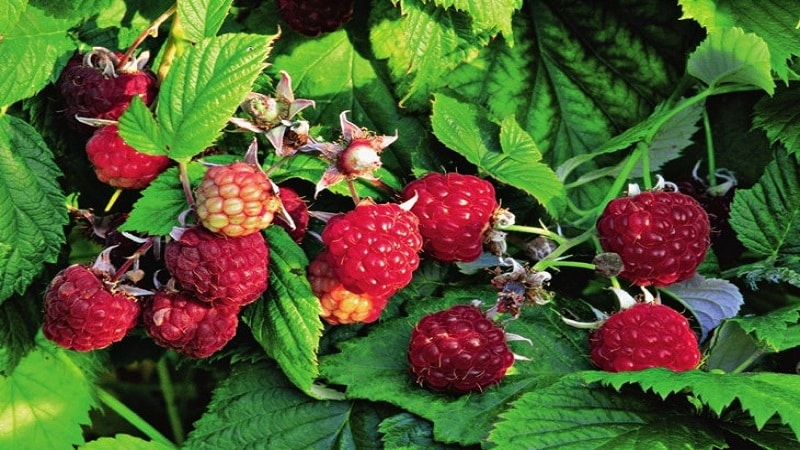
Main reasons for transplantation:
- soil depletion;
- decreased productivity;
- deterioration in the taste of berries;
- reduction in berry size;
- thickening of plantings;
- spread of diseases and pests.
Replanting stimulates the growth of young shoots and bush renewal. The procedure is performed once every 4-5 years. If the plant retains its original characteristics, replanting is postponed for 2-3 years.
Transplant timing
The optimal time to transfer raspberries to a new place is a month before first ground frosts.
Depending on the climatic conditions of each region the procedure is performed:
- in October - November - in the south (Krasnodar Territory);
- in September - in the middle zone (Moscow region);
- at the end of August - beginning of September - in Siberia and the Urals.
Inspection will help determine the plant’s readiness for transplantation.: the fruits must ripen completely and replacement buds should appear on the root collar. This usually occurs at the end of the growing season. On bushes of early varieties, such buds form in September, on late varieties - in October.
Work on moving raspberries to a new place in the fall is completed before frost. Then the bushes will be able to take root and will not suffer from the cold.
Favorable days according to the lunar calendar for transplanting raspberries for 2020:
- August: 21-23, 27, 30-31;
- September: 1, 5-10, 14-17, 22, 23, 26-28;
- October: 1, 2, 4-8, 11-14, 19, 20, 24, 25, 28-31;
- November: 3, 4, 7-11, 16, 17, 20, 21, 25, 26,30.
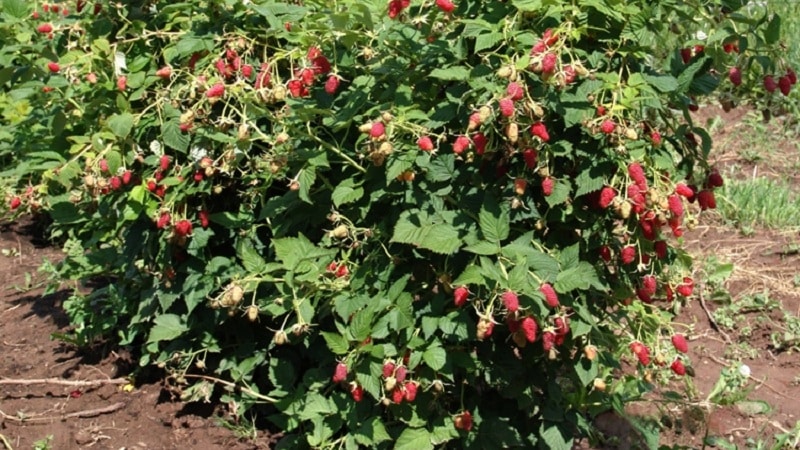
Choosing a location and proximity to other plants
The site for planting raspberries is chosen in partial shade, with protection from gusty winds and drafts. With a lack of sunlight, young shoots stretch out and form thin and long internodes. The lower part of the shoots is exposed, which leads to a decrease in productivity.
Raspberries are demanding of soil moisture and react painfully to its lack.. This is due to the superficial location of the roots and the rapid evaporation of moisture from the wide leaves. At the same time, the crop does not tolerate waterlogging and high groundwater levels. Excess moisture causes the roots to die and the plant to die.
Raspberries are also demanding on the composition of the soil.. The average period of growing raspberries in one place is 10-15 years. During this period, most of the nutritional components are washed out of the soil.
Experienced gardeners recommend following the rules of crop rotation. Bushes cannot be planted in the place of another raspberry, next to potatoes, strawberries, tomatoes, fruit trees due to the risk of infection by the same fungi and bacteria.
The best raspberry predecessors: zucchini, alfalfa, mustard, oats, rye, peas, beans, cucumbers, onions, garlic, currants, gooseberries.
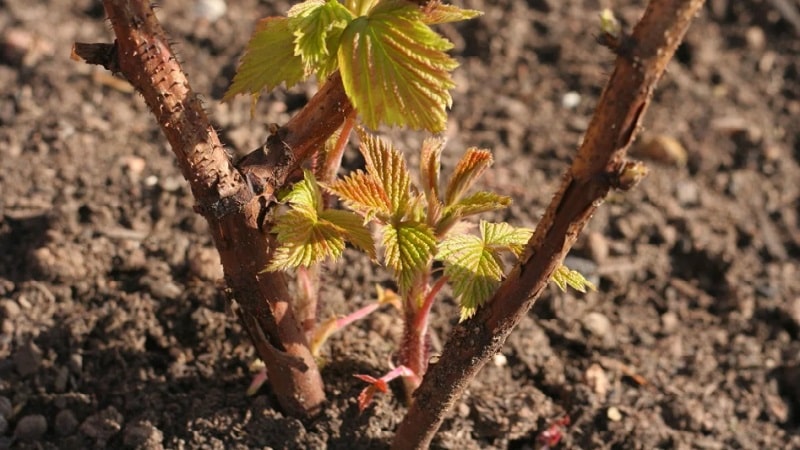
Selection and preparation of seedlings for transplantation
Strong, healthy bushes with developed rhizomes are suitable for replanting.. The diameter of the roots must be at least 1 cm.
Important nuance: the root system of the main bush and the root shoots is common. Accordingly, they have one power source. In the process of digging a bush, the roots are inevitably damaged, and the plant spends energy on developing roots rather than growing shoots and green mass. What is the right thing to do? Before digging and replanting, it is recommended to trim the raspberry bush heavily, leaving no more than 40-60 cm in height, and to tear off all the foliage on young seedlings.
It can be useful:
Soil preparation
The crop needs fertile soil and only then produces a bountiful harvest.. Suitable soil types are loamy and sandy loam with neutral acidity (pH = 6.5-7). Acidic soil is deoxidized with dolomite flour, slaked lime (400-500 g/m²), wood ash (500 g/m²).
The area is pre-cleared of plant debris and weeds., since they deplete and dry the soil, they become a haven for pests and fungi.
The soil is prepared 3-4 months before transplantation. Fertility is increased with compost or rotted manure (6-8 kg/m²), superphosphate (30-40 g/m²), potassium sulfate (30-40 g/m²), wood ash (1 l/m²).
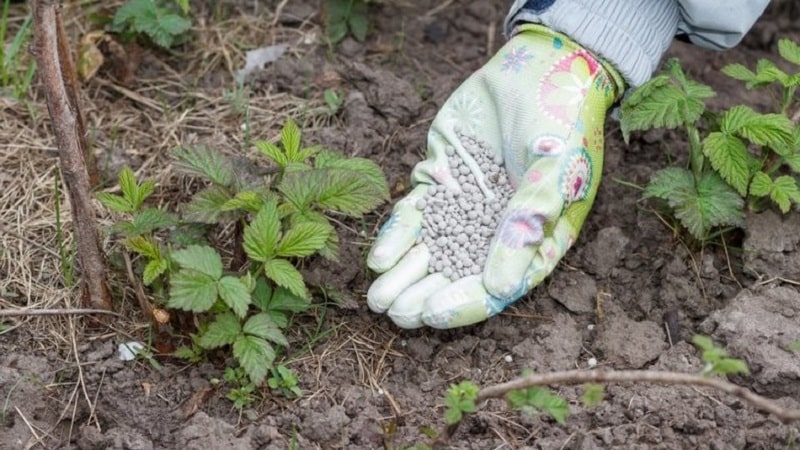
In the fall they bring more potassium-phosphorus fertilizers, in spring - organic. Nitrogen fertilizers applied in the autumn have a negative effect on the development of plants in winter.
Some gardeners put fertilizers in the holes during the transplanting process, reducing the amount by 2 times. 5 cm of soil is poured on top.
Important! When planting a seedling with bare rhizomes, the use of fresh manure and mineral fertilizers is not recommended. They can burn damaged roots, which will lead to stunted plant growth or death.
Transplant technology
How to replant a plant in the fall? Raspberries are transplanted using the bush method (into planting holes) or the strip method (into a trench). For each technology, there are certain rules for planting depth and creating gaps between seedlings.
Trench method
This method is used to transplant ordinary raspberries.. Trenches are formed on the site 1.5-2 m long, 40-45 cm deep, 50-60 m wide.
But the bottom is laid with rotted cuttings of boards, sawdust, branches, and on top - compost and mineral fertilizers, if work to increase the nutritional value of the soil has not been carried out before.
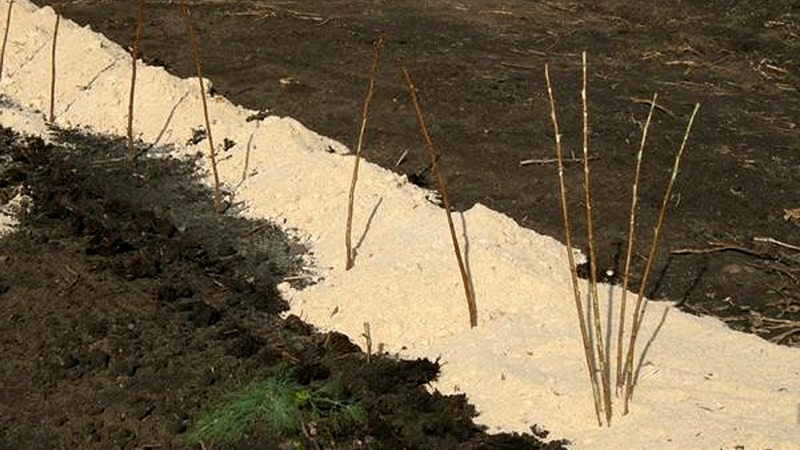
Plant roots are dipped in a solution of clay and mullein, and then sprinkled with earth.. The bushes are placed in trenches at intervals of 40 cm from each other. Soil is evenly poured on top and the plantings are watered. The area is mulched with sawdust, straw, and peat.
Advice. Position the trenches from northeast to southwest. This will ensure better heating of the plantings by the sun's rays in the morning and afternoon.
Pit method
The pit or bush method is used for transplanting remontant raspberries.. Holes are dug on the site with a depth of 40 cm and a diameter of 60 cm. The row spacing is 1.5 m. The interval between bushes is 70-100 cm.
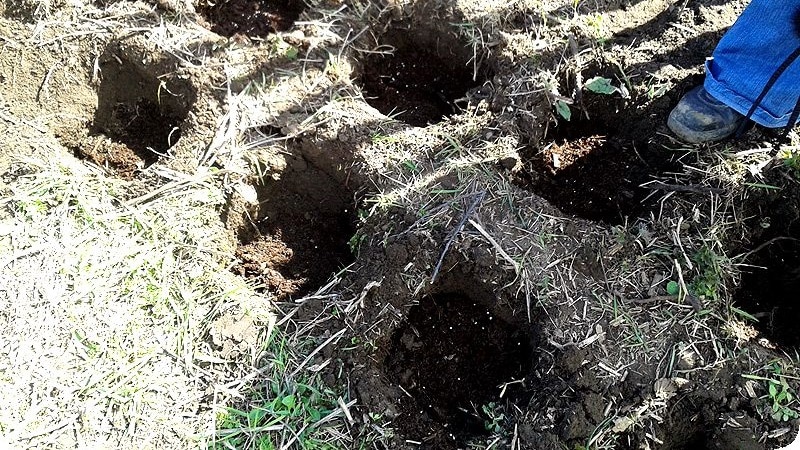
Methods for preparing the root system of seedlings and holes are identical to the trench method. After planting, the soil is watered, compacted and covered with mulch.
Reference. Remontant raspberry varieties are characterized by continuous flowering and ovary formation in the summer.The berries set until frost.
Reproduction methods
Raspberries reproduce by dividing the bush and root shoots. The first method is used when replanting old bushes.
Plant propagated by autumn lignified and spring young offspring, green and root cuttings.
Dividing the bush
Old raspberry bushes are replanted by division. For this purpose, healthy and strong specimens are selected.
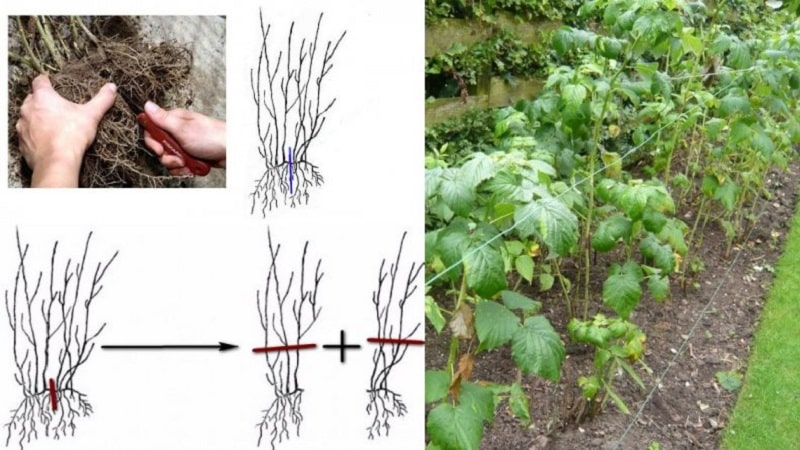
Trenches or holes are dug in the prepared area. The bushes are carefully dug up from all sides, placing the shovel strictly vertically. If you immerse it at an angle, there is a risk of damaging the main roots. The plant is removed from the soil along with a lump of earth. In case of planned transportation, the rhizome is placed in a bag with wet paper or wrapped in wet spunbond.
Bush divided by hand or with a garden knife. The seedlings are immersed in trenches or holes, deepening the root collar by 2-3 cm. Soil is poured on top, compacted and watered (5 liters per bush). As soon as the soil settles, more soil is poured on top and mulched with peat, straw or sawdust with a layer of 5 cm.
Root shoots
Root shoots are young shoots that emerge from adventitious root buds an elongated plant. They grow near the main bush at a distance of 30-70 cm.
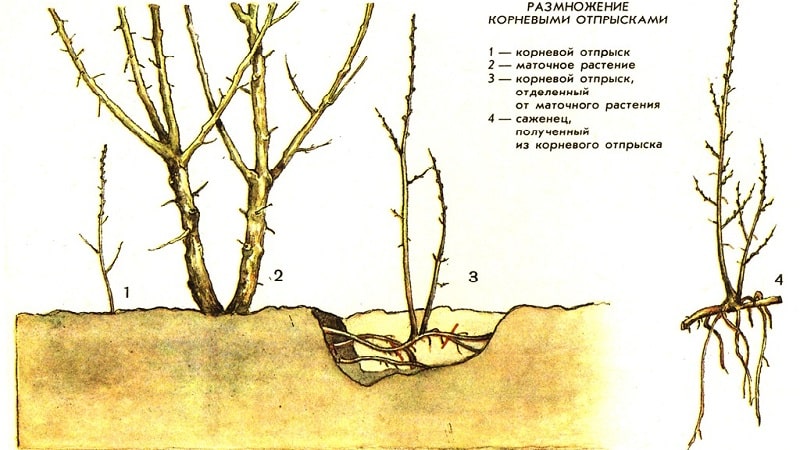
Transplanting root shoots is similar to the process of replanting an adult plant, except a few points. Often propagation by this method is carried out in the spring - by young green offspring. Their length reaches 15-25 cm, and the root system is actively developing.
By autumn, these shoots will become coarser and stretch up to 50 cm in height, and the trunk will become woody.. In this case, the above-ground part is shortened by half, leaving 20-25 cm.After planting, young seedlings are shaded with special mesh fiber or thin cotton fabric. After a week, the cover is removed. During this time, the seedlings will have time to take root.
Take note:
Care after transplant
Rules for caring for raspberries:
- The bushes are watered once every 7 days, if the plantings are not mulched, 3 liters per 1 m².
- The shoots are pressed to the ground to prevent freezing in winter. Steel wire is suitable for this purpose. The procedure is performed when the ground is covered with an ice crust. Then the bushes will be completely covered with snow.
- Weeds are removed as they grow.
- The first feeding is carried out after 2-3 weeks: a solution of mullein 1:10, 1 liter per bush, and a solution of “Kornevin” for better survival of the root system.
Conclusion
Experienced gardeners recommend replanting some of the raspberries to a new place so as not to lose all the plantings. Bushes are transported from late August to November. For ordinary raspberry varieties, the trench method of planting is used, for remontant varieties, the pit method is used. Further care of the plantings includes tying up seedlings, watering, and applying organic fertilizers.